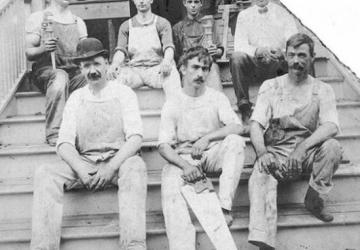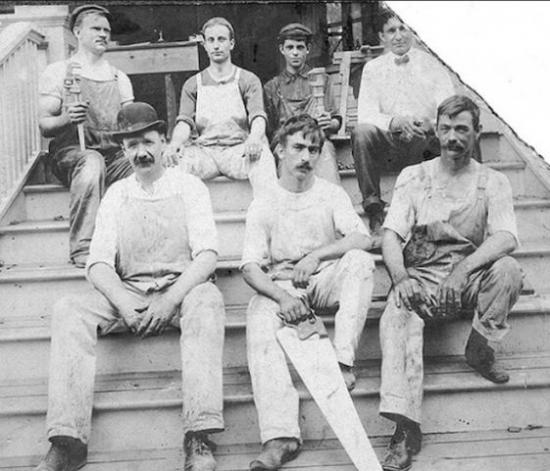Thinking and Working Outside the Platform

On the one hand, Facebook is on fire, and soon the whole surveillance economy will start burning down too (including publishers who depend on that economy no less than Facebook does).
On the same hand, lots of Linux wizards work in that economy, which is a lot larger than Facebook alone.
Also on the same hand, lots of wizards and muggles alike are wondering out loud how we can come up with alternatives to Facebook and other "social" platforms: ones that don't depend on surveillance-based advertising.
On the other hand, we can move beyond platforms. Let me explain.
See these guys?

Those are carpenters who worked for DW Griffith, the silent film maker, back around 1908. The head carpenter is the guy on the bottom right: George W. Searls, my grandfather.
In the early years of silent film, here’s what they built:

Theaters. With stage sets.
That’s because film makers in those days thought and filmed inside the box they knew, which was theater. They'd set up a camera pointed at a stage, where actors performed just like they did in theaters.
Griffith’s biggest pioneering move was to take the camera outside the theater, into streets and homes of Fort Lee, New Jersey, across the river from New York (that's where the shots above took place)—and then out to Hollywood and a West that was still wild. Look up DW Griffith silent shorts, and somewhere among the films that come up will be the steps on which Grandpa and his carpenters sat.
Those carpenters were the hackers that helped Griffith, and the whole film industry, think and build outside the theater.
In a similar way, we need the Linux geeks and allied wizards to help the tech industry think and work outside the platform.
Platforms are to the internet what theaters were to film: a way to do an old thing in a new place where the horizons are so much wider. Facebook is just AOL 2.0, and AOL was just another LAN. On the Net, anybody can do anything.
Let’s hack the world back to that simple realization, and to stop thinking the cure for a bad platform is a good one.










